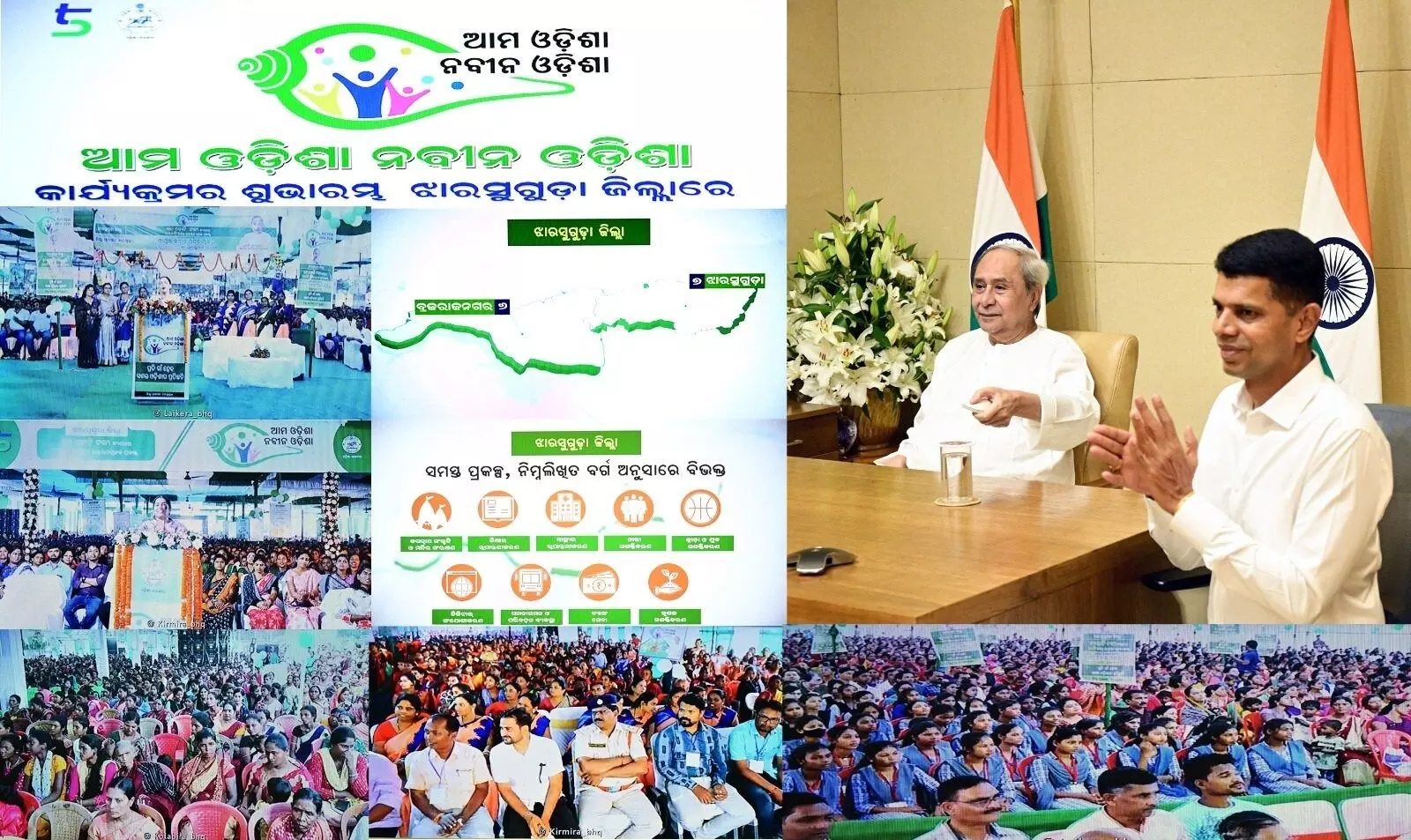Path to prosperity
Through its welfare policies combining rural infrastructure development and cultural preservation, the Ama Odisha Nabin Odisha initiative is facilitating inclusive progress in the state

In today's fast-paced world, where development often takes precedence, the Odisha Government’s ‘Ama Odisha Nabin Odisha’ (AONO) initiative, spearheaded by Hon’ble Chief Minister of Odisha and implemented by the 5T and AONO Chairman Shri Karthikeyan Pandian, emerges as a holistic approach to change. It is built on the principles of a welfare state combining the improvement of rural infrastructure with the preservation of cultural heritage. It is solid proof of Odisha's commitment to inclusive progress and human-centric development.
Mahatma Gandhi said that the heart of India is in its villages. He emphasized rural development and considered it as a catalyst for growth. Odisha follows this Gandhian principle in letter and spirit under the leadership of Naveen Patnaik. A predominantly agrarian state, with a significant portion of its population engaged in agriculture and its allied activities, recognises that the key to the overall development lies in the transformation and improvement of its rural areas. The prosperity of cities is intricately linked to the well-being of villages and that is why the kernel of the initiative is to generate employment, empower the local populace, and foster overall development by preventing rural exodus causing overcrowding in cities.
Ama Odisha Nabin Odisha is not confined solely to urban development but extends to every nook and cranny of the state, reaching even the remotest villages. Notably, the road infrastructure in Odisha is well-developed and has been undergoing significant improvements, with roads connecting every corner of the state. Working on that advantage, the Location Accessible Multi-modal Initiative (LAccMI) scheme with an estimated cost of approximately Rs 3,178 crore has been floated to establish a seamless public transport network connecting gram panchayats, block headquarters, district headquarters, major cities, and economic hubs. The strategic use of buses for connectivity has and will prove beneficial, particularly given the limitations of the railway network in the region. It fosters economic growth and brings various advantages to the connected areas. It is singularly a pioneering move, making Odisha an example for the rest of the states in India.
One of the paramount aspects of ‘Ama Odisha Nabin Odisha’ is the development of primary school infrastructure which is fundamental to the educational landscape. Adequate and well-equipped primary school facilities create a conducive learning environment, enable academic growth and inspire a lifelong love for learning.
Another essential pillar of ‘Ama Odisha Nabin Odisha’ is the development of banking infrastructure in rural areas. It aligns perfectly with Amartya Sen's capabilities approach. By providing easy access to a wide range of financial services, it empowers individuals to save, invest, borrow, and secure their financial future. The shift from financial exclusion to inclusion is a significant step towards comprehensive welfare, steered by visionary Chief Minister Naveen Patnaik. Mission Shakti Infrastructure Development is another powerful endeavour to empower women and address deeply entrenched social and gender norms. It means breaking down barriers, challenging stereotypes, and creating an environment where women can thrive and make a lasting impact on society. Empowered women contribute significantly to the well-being and progress of their families and communities, fostering holistic development, and Odisha is a bright example for leading the initiative. In fact, Patnaik’s tenure is a golden era for women.
A vital part of the initiative is the provision of amenities near places of worship that play a pivotal role in creating a welcoming and inclusive environment for devotees. It enhances the overall experience of worshipers and makes these sacred places more convenient and comfortable for people to come together, pray, learn, and connect, fostering a sense of community and belonging. The preservation of heritage sites is a crucial part of the programme, reflecting the government's dedication to safeguarding the cultural identity of Odisha as they are not just relics from the past, they are windows to history, showcasing the rich traditions. The preservation effort, apart from its cultural importance, has an economic dimension. Abhijit Banerjee's work on cultural preservation underscores how heritage sites can attract tourists, generate revenue, and create jobs, contributing to the welfare of the community. The preservation of the Jagannath culture is an ode to the spiritual and cultural essence of Odisha, as Odisha is synonymous to Lord Jagannath. Protecting and promoting this centuries-old culture ensures the continuity of sacred practices and spiritual traditions passed down through generations.
The development of sports infrastructure is a physical investment and an investment in the well-being of the community. It facilitates sportspersons to hone their skills, promotes physical fitness, enhances community cohesion, provides economic opportunities, and fosters a sense of national pride.
As we reflect on the extraordinary initiatives within ‘Ama Odisha Nabin Odisha’, it is a promise of a brighter future for the people. The government’s dedication to rural infrastructure development, heritage preservation, women empowerment, education, and sports infrastructure is an exemplar of commitment to the welfare of the state. It deserves heartfelt appreciation for its vision and dedication to transforming rural Odisha. Odisha is not only creating a better future for the people but also setting an example for other regions to follow. Mahatma Gandhi would indeed be happy to see that a leader like Naveen Patnaik exists who has been successfully following all Gandhian principles in governance, requesting for inclusion of Non-Violence in the Preamble and closing the gap between Gandhism and Gandhigiri!
The writer is the Member of Parliament from Kandhamal. Views expressed are personal




